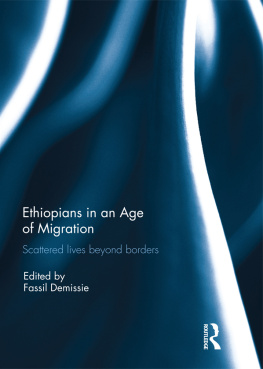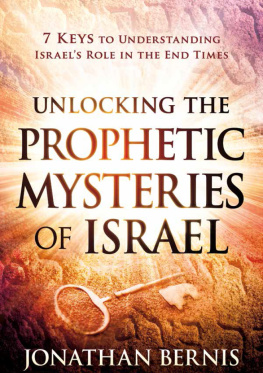
First published 1999 by Ashgate Publishing
Reissued 2018 by Routledge
2 Park Square, Milton Park.Abingdon, Oxon OXl4 4RN
711 Third Avenue, New York, NY 10017, USA
Routledge is an imprint of the Taylor & Francis Group, an inform a business
Copyright Richard lsralowitz and Jonathan Friedlander 1999
All rights reserved. No part of this book may be reprinted or reproduced or utilised in any form or by any electronic, mechanical, or other means, now known or hereafter invented, including photocopying and recording, or in any information storage or retrieval system, without permission in writing from the publishers.
Notice:
Product or corporate names may be trademarks or registered trademarks, and are used only for identification and explanation without intent to infringe.
Publishers Note
The publisher has gone to great lengths to ensure the quality of this reprint but points out that some imperfections in the original copies may be apparent.
Disclaimer
The publisher has made every effort to trace copyright holders and welcomes correspondence from those they have been unable to contact.
Designed by Rahul Bhushan
A Library of Congress record exists under LC control number: 99073479
ISBN 13: 978-1-138-70308-7 (hbk)
ISBN 13: 978-1-315-20338-6 (ebk)

In memory of Joseph Friedlander
Acknowledgements
This study of social and cultural transition emerged from the collaborative work of the editors and the photographer who came together under the auspices of the University of California at Los Angeles and Ben-Gurion University of the Negev. We are grateful to the Council for International Exchange of Scholars for the Fulbright Fellowship research grant provided to Ron Kelley which facilitated his extensive field work. On the UCLA side we gratefully acknowledge the steadfast support and dedication of Georges Sabagh and Irene A. Bierman, past and current directors of the Center for Near Eastern Studies; and of John Hawkins, Dean of International Studies and Overseas Programs (ISOP). At Ben-Gurion University, Lehaim Naggan, Vice-President and Dean for Research and Development, provided the essential commitment and foresight that allowed the project to come to fruition with support from the Faculty of Humanities and Social Sciences, and from the Israel Council of Higher Education. Also, we appreciate the support and dedication of Stephen and Sonia Hurst from the United States who helped keep many visions moving forward. Diane James and Alison Feldman shaped the volume as text editors. The editors also thank Catherine Logan, Sara Ellen Ben-Eliahu and Madeleine Comora who worked on the volume at various stages of its development; Rahul Bhushan for book design and image scanning; and Michele Browna and German Esparza for fueling this endeavor at ISOP. Our gratitude and love to Carol Lisa Brenner and Samuel Isralowitz for their careful reading of the manuscript. Sonia Hubbard at Ashgate navigated the production of the volume. Foremost, we are indebted to members of the Russian, Ethiopian and Bedouin communities whose cooperation and friendship made this book possible.
| Richard Isralowitz | Jonathan Friedlander |
| Ben-Gurion University | University of California |
| Beer Sheva | Los Angeles |
Contents
Richard Isralowitz and Jonathan Friedlander
Yehuda Gradus and Richard Isralowitz
Haim Chertok
David Newman, Yehuda Gradus and Esther Levinson
Richard Isralowitz
Richard Isralowitz and Ismael Abu Saad
Esther Hertzog
Julie Cwikel
Haim Chertok
Ismael Abu Saad
Richard Isralowitz and Jonathan Friedlander
Israel today continues to address a fundamental principle of Zionism, settling Jewish people from all corners of the world within its borders. The country has experienced several waves of immigration in its history, the most recent occurring between 1989 and 1991, when some 360,000 Soviet and 40,000 Ethiopian Jews emigrated. In just four years Israel, about the size of New Jersey, added proportionally as many newcomers to its population as the United States did between 1970 and 1990.
Immigration and settlement are hallmark features of Israel, and especially in its arid southern region, the Negev. Since the mid-20th century, the Negev has been a gathering point for waves of new Jewish immigrants, beginning with the hundreds of thousands who came from North African and Middle Eastern countries. From the 1960s onward, Israeli government policies have accelerated the settlement process of indigenous Bedouins as well. More than 80,000 Bedouins now live in the Negev, about half in towns created for them and the rest scattered throughout the region.
Israels first Prime Minister, David Ben-Gurion, believed that settlement of the Negev was essential to the future of the nation. Under Ben-Gurions government the Negev flourished. New towns were developed and the national water system was extended to address the needs of the region. Following his retirement, however, the Negev lost its status as a focal point of attention, especially after the 1967 Six-Day War when new development opportunities became available in the territories acquired by Israel.
The arrival of Jewish refugees from the former Soviet Union and Ethiopia was seen as a blessing for the sagging prospects of the Negev. Essays in this volume reveal, however, that government-sponsored settlement of the three groupsthe Russian, Ethiopian and Bedouinhas not always been based on principles of self-determination or free of prejudice related to race, culture or religion. Such differential treatment has also influenced the manner in which newly settled members of the three groups regard and relate to one another, contributing to the perpetuation of existing bias and misperception.
Yehuda Gradus and Richard Isralowitz introduce the Negev and its history since 1948, identifying organizational strategies that can address the regions lack of successful development coordination. In a meditative essay on his hometown of Yeruham, Haim Chertok explores this pioneer community established in the 1950s for immigrants and recently revitalized by an influx of new Russian arrivals. Russian Jews, whose considerable numbers have allowed them to mobilize political power and social presence, have been relatively successful in quickly adapting to Israeli society and finding decent jobsso much so that Chertok fears they may abandon Yeruham for opportunities in the central and coastal regions of the country.
David Newman,Yehuda Gradus and Esther Levinson examine the impact of the early 1990s mass migration on the Negev. The authors point to the strain on municipal infrastructure and employment resources caused by rapid population growth and the dependence of small development towns on the regional capital, Beer Sheva. The frustration immigrants attribute to government policies and their feelings of social isolation are articulated in a compilation of interviews with Russian and Ethiopian residents of Nahal Beka, which at the time of the interviews in the early 1990s was the largest temporary settlement in the Negev for newly arrivied immigrants.











